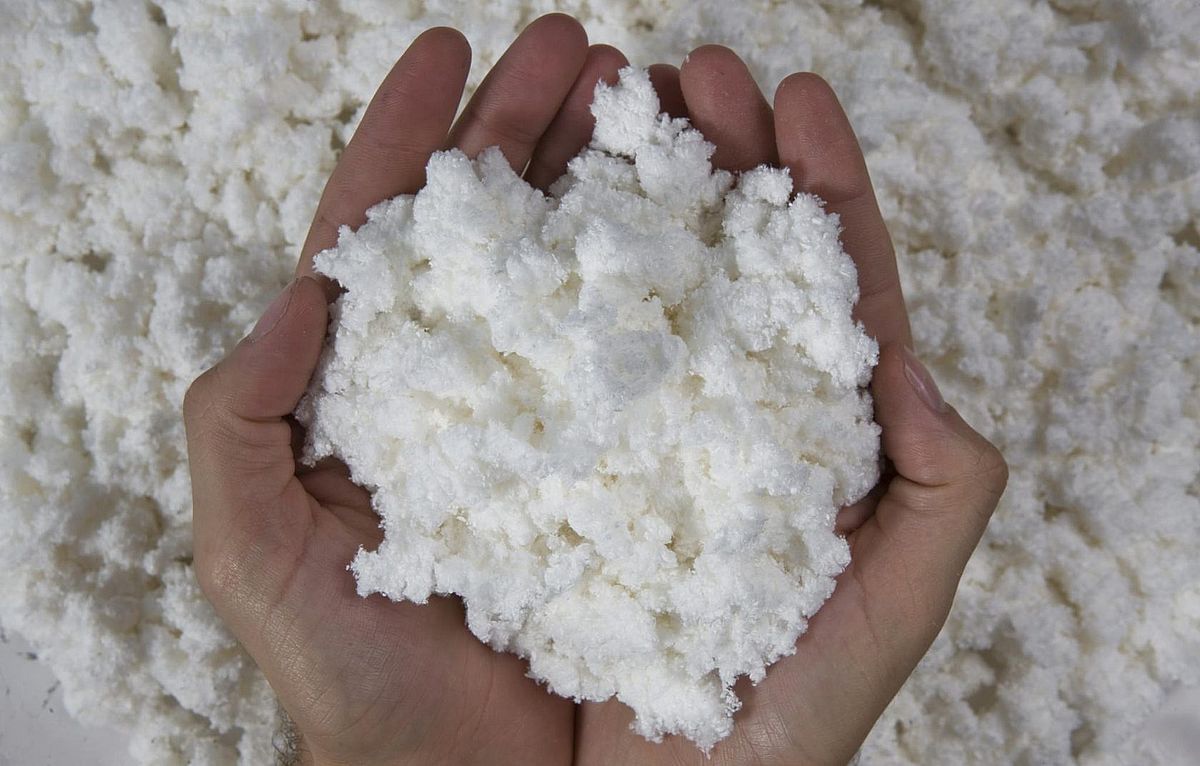What is Dissolving Pulp?
A Brief Introduction
Dissolving pulp, also known as dissolving grade pulp, is a type of wood pulp that is used as a raw material in the production of man-made fibers, films, pharmaceutical products and several other derivates. Produced from either wood or cotton linters, dissolving pulp is purified to a higher level than pulp produced for paper. This purification process removes residuals like lignin and produces almost pure cellulose fibers that can be readily dissolved. The end products where dissolving pulp finds application require cellulose in its purest form.
Main Sources and Production Process
Dissolving pulp is produced from both wood and non-wood sources. Softwood or hardwood pulp is most commonly used as the wood source for production. Cotton linters, the short fibers left on cotton seeds after ginning, is also used as a non-wood source for some dissolving pulp grades.
Regardless of the source, the production process involves cooking the pulp source using chemical methods to break down lignin and hemicellulose. This is followed by extensive purification using processes like caustic extraction to remove residual lignin and hemicellulose. Bleaching is also done to further purify and whiten the cellulose fibers. The degree of purification is higher for dissolving pulp compared to paper pulp to ensure maximum purity of cellulose content.
Applications and Uses of Dissolving Pulp
Textiles and Fibers
One of the largest end uses of Dissolving Pulp is in the production of regenerated cellulose fibers. These fibers, also known as viscose or rayon, are manufactured by regenerating cellulose from dissolving pulp. They find widespread application in textiles, apparel and other fiber goods due to properties like absorbency, durability and dyeability. Rayon is used to make clothing, textiles and other consumer products.
Films and Packaging
Dissolving pulp is also used to manufacture cellophane and other cellulosic films primarily used for food packaging. Cellophane film made from dissolving pulp provides strength, transparency and moisture barrier properties ideal for wrapping and packaging applications in food industries. Other specialty papers and engineering plastics also use dissolving pulp.
Pharmaceutical Products
In the pharmaceutical industry, dissolving pulp plays a key role in manufacturing excipients, the inactive substances used as vehicles for drug delivery. Excipients manufactured using highly purified cellulose from dissolving pulp help carry, dilute or stabilize drug molecules and aid in their absorption into the body. Common examples are capsules, tablets and films used to delivery medications.
Others
Apart from the major uses above, dissolving pulp derivatives also find applications in industries like cigarettes where it is used as a filter material, photographic films and specialty papers manufacturing. With continuous research, new innovative applications are being discovered leveraging the unique purity and fibrous character of cellulose obtained from dissolving pulps.
Global Market and Key Producers
According to recent industry analyses, the global production of dissolving pulp reached over 11.5 million tonnes in 2020 with an annual growth rate of around 2%. The Asia Pacific region, led by China, accounts for the bulk of both production and consumption worldwide due to presence of large manufacturing clusters of downstream industries like textiles.
Some of the major global producers of dissolving pulp include companies such as Sappi, Bracell, Lenzing, Aditya Birla and Borregaard. Leading producers are located across Nordic region, Canada, United States, Brazil and Indonesia leveraging wood resource availability. Many producers have integrated operations producing both paper pulp and dissolving pulp to leverage assets throughout the year.
Future Outlook and New Developments
With continuing globalization of end use industries and market demand for alternatives to petrochemical based products, the production and consumption of dissolving pulp is expected to steadily grow going forward. The specialty cellulose materials industry is poised for considerable expansion driven by new applications in areas biomedical engineering, green composites and 3D printing materials.
Producers are making investments in optimized pulping processes, new pulp grades and yield improvement initiatives to cater growing demand. Research on non-wood based pulping and use of agricultural residues as raw materials can help better utilize biomass resources and diversify supply sources. Overall, dissolving pulp will remain a critical renewable raw material base for various industries well into the future given its purity, renewability and application versatility.
*Note:
1. Source: Coherent Market Insights, Public sources, Desk research
2. We have leveraged AI tools to mine information and compile it




